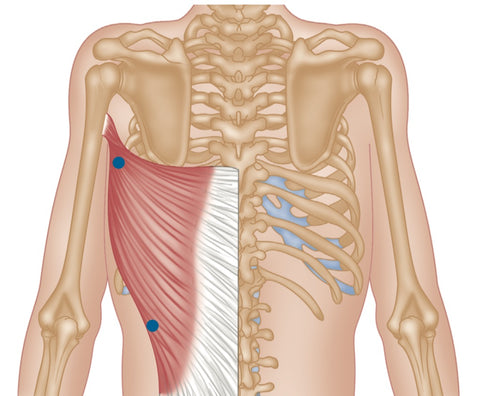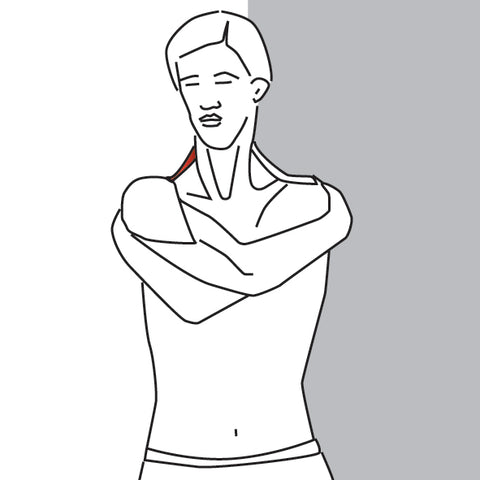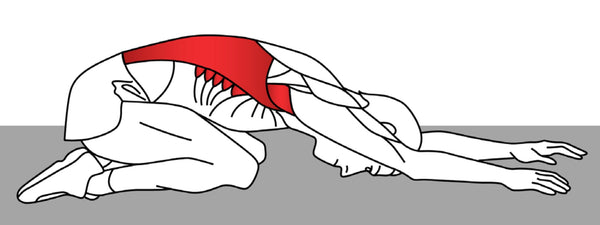Posted by Judith Winer on Dec 13, 2016

Latissimus Dorsi - Common Trigger Point Sites
Common daily activities such as gardening can lead to active trigger points in latissimus dorsi which in turn can lead to painful and debilitating symptoms.
Trigger points in this large muscle can be associated with a number of common conditions including:-
“Thoracic” back pain that is constant in nature and unrelated to activity; frozen shoulder; thoracic outlet syndrome; back pain turning in bed; dull ache under shoulder blade; a sharp pain in the back of shoulder when resting on elbows; or pain reported when lifting the arms (ex. reaching up to a shelf or changing a light bulb).
These trigger points are often caused by golf, racquet sports, swimming, baseball, rowing, heavy lifting or gardening, and may also be caused by prolonged use of a poor-fitting bra.
Simple daily stretching may help prevent latent trigger points becoming active and can also provide some relief from pain for those who are affected by painful active trigger points.
Here are three stretches that just about anyone can do at home or at the workplace. These are especially important for those who work out at the gym using heavy weights or people whose work involves heavy lifting.

Technique:
• Stand upright• Wrap your arms around your shoulders as if hugging yourself
• Pull your shoulders back
Primary muscles:
Trapezius. Rhomboids. Latissimus dorsi. Posterior deltoid.Secondary muscles:
Infraspinatus. Teres minor.
Injury where stretch may be useful:
Dislocation. Subluxation. Acromioclavicular separation. Sternoclavicular separation. Impingement syndrome. Rotator cuff tendonitis. Shoulder bursitis. Frozen shoulder (adhesive capsulitis).
Note:
Perform the stretch slowly, especially when pulling your shoulders.

Technique:
• Kneel on the ground• Reach forward with your hands
• Let your head fall forwards as you lean
• Push your buttocks towards your feet
Primary muscles:
Latissimus dorsi.
Secondary muscles:
Teres major. Serratus anterior.
Injury where stretch may be useful:
Lower back muscle strain. Lower back ligament sprain. Cervical nerve stretch syndrome. Shoulder bursitis.
Note:
Use your hands and fingers to extend your arms forward. Make sure not to lift your feet.

Technique:
• Stand upright
• Extend one arm across your body
• Raise your other arm so that it is parallel to the ground
• Extend one arm across your body
• Raise your other arm so that it is parallel to the ground
• Pull your elbow towards your opposite shoulder
Primary muscles:
Trapezius. Rhomboids. Latissimus dorsi. Posterior deltoid.
Secondary muscles:
Infraspinatus. Teres minor.
Injury where stretch may be useful:
Dislocation. Subluxation. Acromioclavicular separation. Sternoclavicular separation. Impingement syndrome. Rotator cuff tendonitis. Shoulder bursitis. Frozen shoulder (adhesive capsulitis).
Note:
Keep your arm straight and parallel to the ground during this stretch.
Комментариев нет:
Отправить комментарий